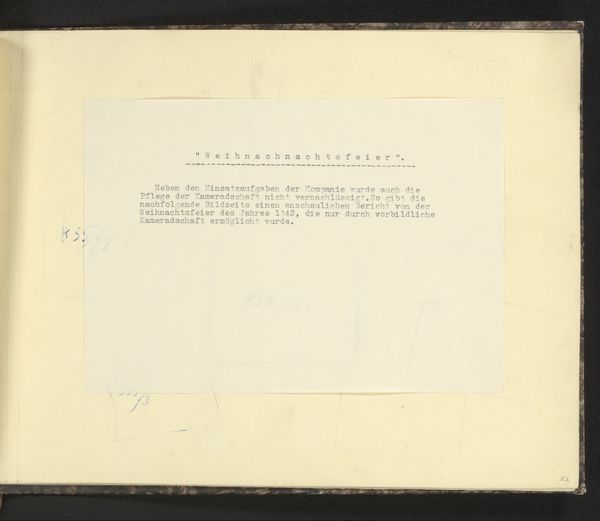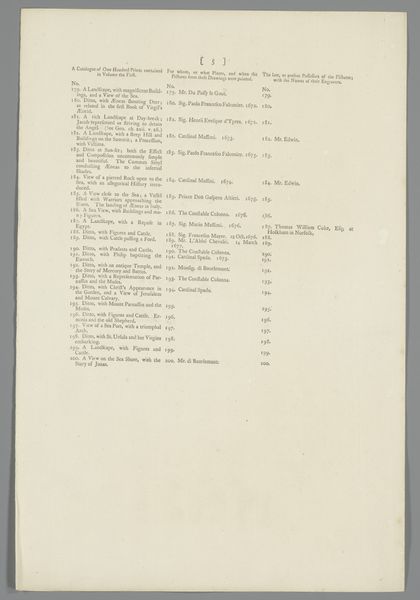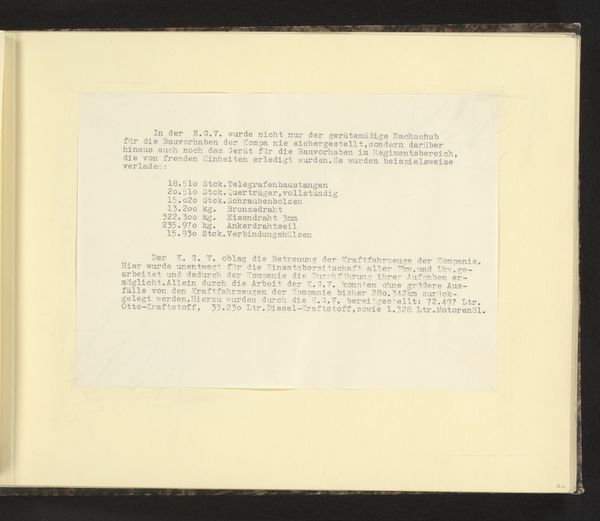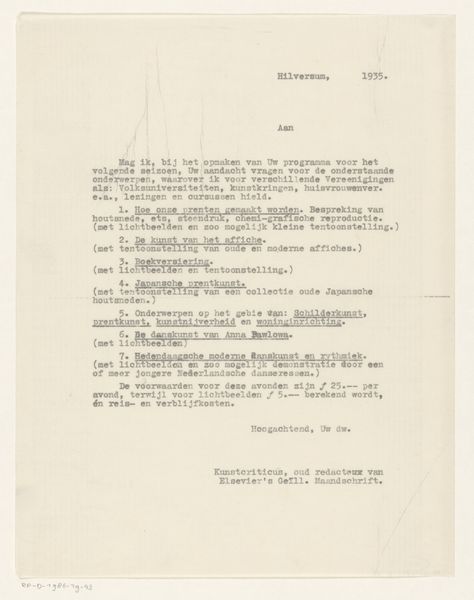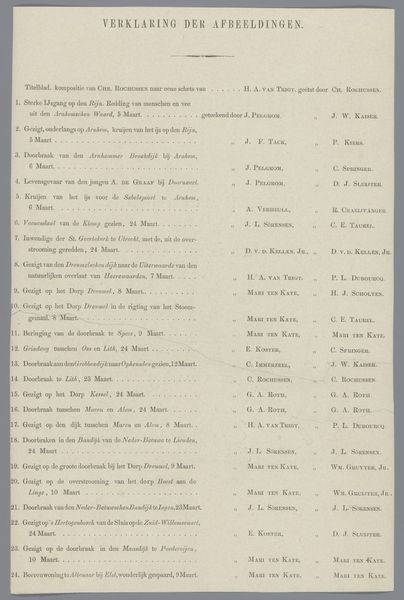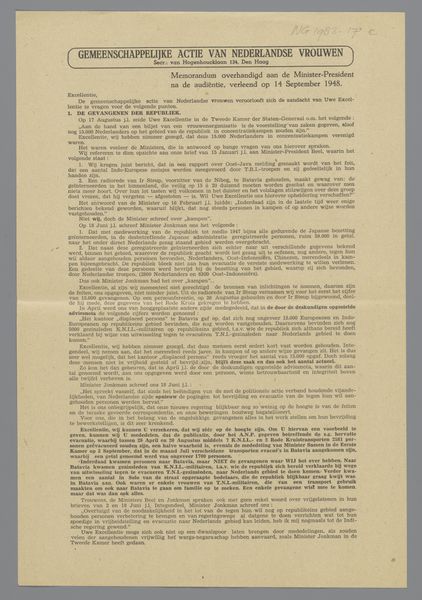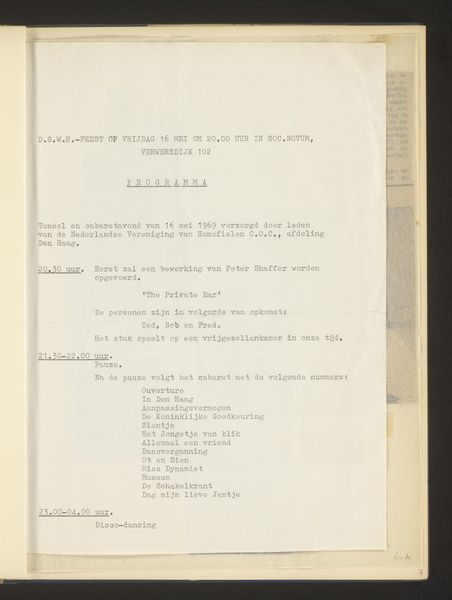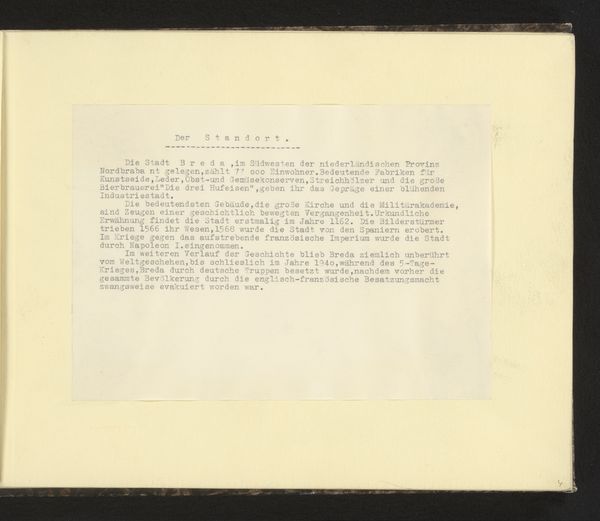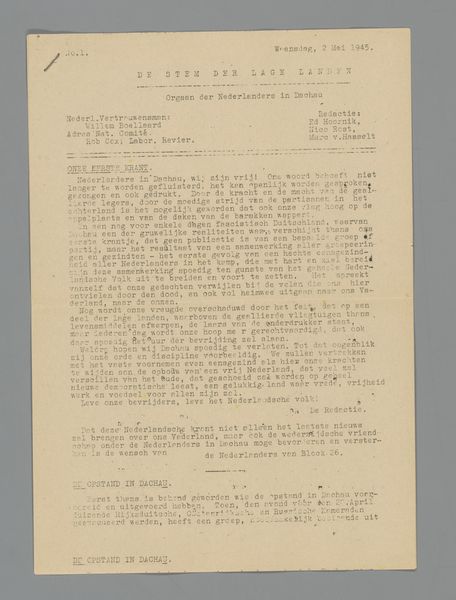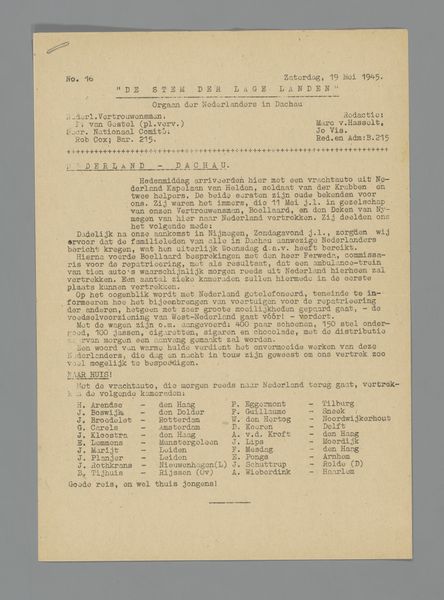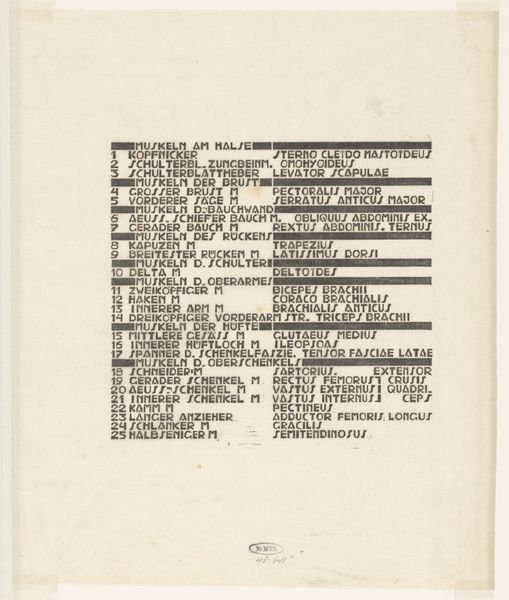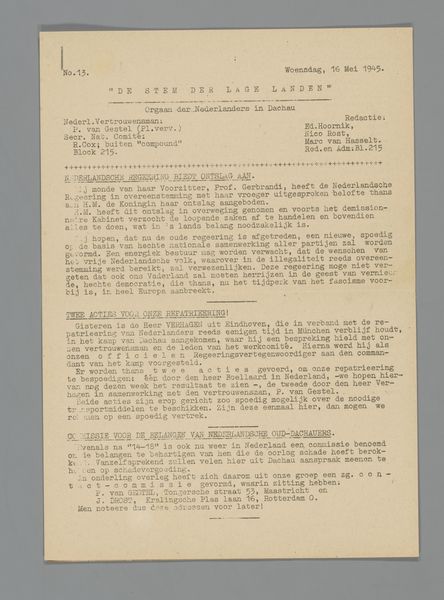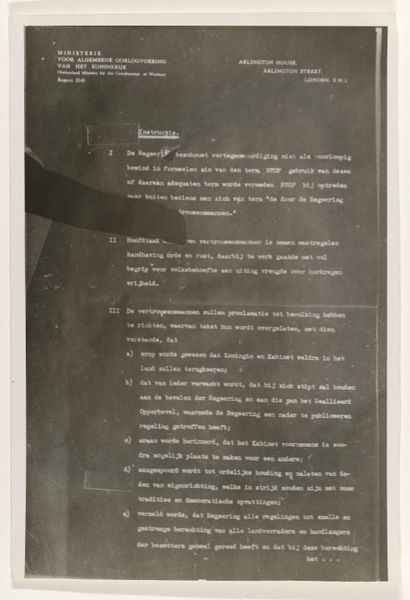
Prijslijst van reisschetsen uit Venetië gemaakt door R.W.P. de Vries Jr. 1884 - 1952
0:00
0:00
drawing, print, paper, photography
#
portrait
#
drawing
#
yellowing
#
aged paper
# print
#
paper
#
photography
#
fading type
#
yellow element
#
thick font
#
history-painting
#
handwritten font
#
golden font
#
classical type
#
modernism
#
historical font
#
columned text
Dimensions: height 276 mm, width 199 mm
Copyright: Rijks Museum: Open Domain
Curator: Looking at this work, the faded typography gives me a powerful sense of time and place. The yellowing paper, the classical font, and the columned text are striking. Editor: Indeed. This piece, entitled "Prijslijst van reisschetsen uit Venetië gemaakt door R.W.P. de Vries Jr.", roughly translates to "Price list of travel sketches from Venice made by R.W.P. de Vries Jr." The artist, Reinier Willem Petrus de Vries, was active between 1884 and 1952. Curator: It feels intensely personal and perhaps utilitarian. A list typed or printed—seemingly in multiple fonts—on aged paper, detailing prices…for scenes of Venice. I am intrigued. Editor: Think about the historical context. The early to mid-20th century witnessed increasing tourism. De Vries perhaps capitalized on this by offering small, portable sketches. Each site listed has significance. The repeated "Canal Grande," hints at the waterway's draw for visitors. Curator: And there’s a variation in prices. Notice that "Canal Grande" (II) and "Brug in Venetie?" all possess different price points from the repeated location, suggesting possibly scale, size, media of the piece. The composition of the text itself is also interesting, seemingly casually spaced out on the page. The choice of fonts as well strikes me as unusual. Editor: Right. Furthermore, Venice, with its famed canals and architecture, offered endless material for artists catering to the tastes of European travelers. This price list underscores the commodification of Venice, of turning lived experience into a saleable item. Also, the listing is in Dutch rather than Italian. This could speak to an intended northern-European tourist clientele. Curator: The use of prints as an affordable art medium cannot be discounted, suggesting art for the masses, making this extremely accessible. Editor: Precisely, it shows the intersections of commerce and art and access during this period, asking what price one puts on the tourist experience. Curator: For me, the material presentation itself is what truly holds my attention here and lends this piece the charm it still seems to possess. The simplicity makes this artwork so impactful. Editor: Absolutely. It's a fascinating glimpse into the economic landscape of early 20th-century tourism and art-making.
Comments
No comments
Be the first to comment and join the conversation on the ultimate creative platform.

